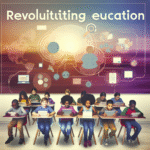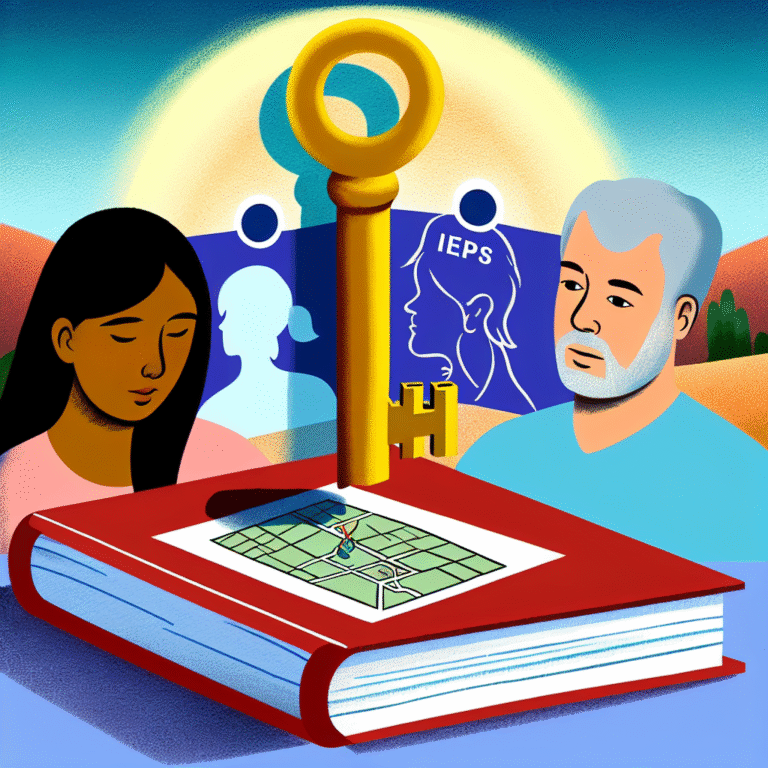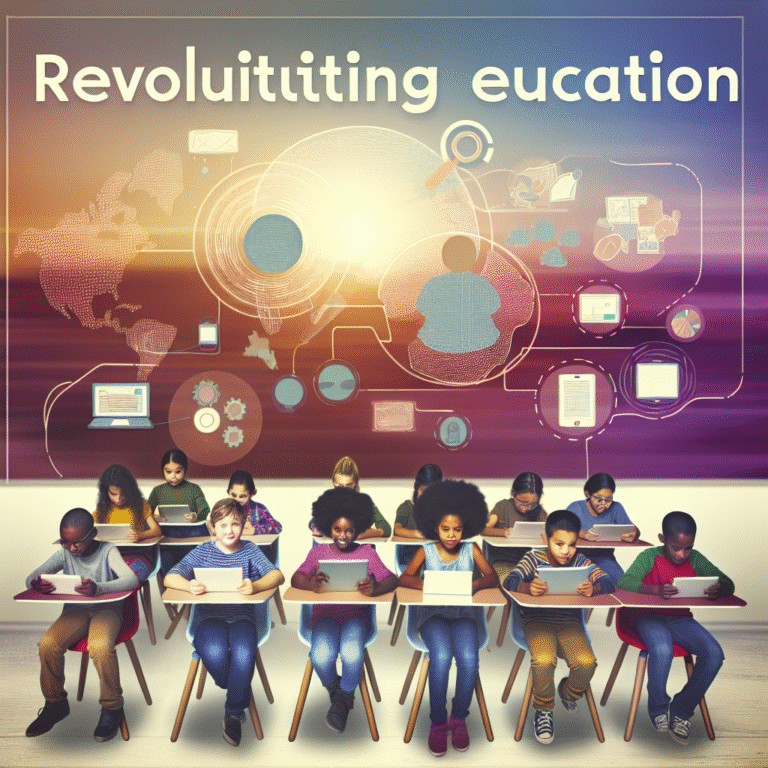
Breaking Barriers: How to Improve Processing Speed in Students with Learning Disabilities
Introduction
In today’s fast-paced society, processing speed can profoundly impact learning opportunities, self-esteem, and academic performance—especially for students with learning disabilities. The struggle to keep up with peers can leave these students feeling isolated and overwhelmed. However, understanding how to improve processing speed can help break these barriers and offer a pathway to success. In this article, we will explore effective strategies, insights, and real-world applications that illuminate the journey to enhance processing speed in students with learning disabilities.
Understanding Processing Speed
Processing speed refers to the pace at which an individual can process information, perform tasks, and respond to challenges. It’s a crucial cognitive skill that affects areas such as reading, math, and comprehension. For students with learning disabilities, processing speed can be significantly impacted, leading to frustrations in the classroom.
The Importance of Processing Speed
Processing speed is integral to critical thinking, problem-solving, and learning. It’s not just about the speed of response but the ability to organize thoughts efficiently. It plays a vital role in:
- Academic Performance: Slower processing can lead to challenges in completing tests and assignments on time.
- Social Interactions: Students may find it difficult to engage in social situations where quick responses are expected.
- Self-Esteem: Experiencing continuous challenges can impair students’ confidence in their abilities.
Types of Learning Disabilities Impacting Processing Speed
Understanding the specific learning disability will help tailor strategies for improvement. Common learning disabilities that may affect processing speed include:
- Dyslexia: Often associated with difficulties in reading and language processing. Students may take longer to decode words.
- Dysgraphia: Challenges in writing can slow down the processing of thoughts onto paper.
- Dyscalculia: Difficulties with mathematical concepts may hinder the speed at which numerical problems are solved.
Recognizing these challenges helps educators and caregivers implement appropriate methods.
Breaking Barriers: Techniques to Improve Processing Speed
When addressing processing speed, a multi-faceted approach can produce significant results. Here are several effective strategies that can be employed:
1. Multi-Sensory Instruction
Multi-sensory instruction is an essential approach to breaking barriers in processing speed. By engaging multiple senses—visual, auditory, and kinesthetic—students can internalize information better. Studies show that students with learning disabilities benefit from using various modalities for learning.
Case Study: Multi-Sensory Techniques in Action
A school in Texas implemented multi-sensory strategies in its reading program for students with dyslexia. The results were astounding—students not only improved their reading speed but also their comprehension levels.
2. Technology Integration
Technology can serve as an excellent tool for improving processing speed. Interactive learning apps and assistive technology can accommodate varied learning paces and styles.
Case Study: Technology Empowering Learning
An educational initiative in California provided tablets with specialized software to students with learning challenges. Teachers reported significant increases in processing speed as students engaged more with the interactive content.
3. Structured Environment
Creating a structured learning environment minimizes distractions, allowing students to focus better on their tasks. Color-coded materials, consistent routines, and clear instructions can enhance students’ processing capacity.
Case Study: Impact of Structure on Learning
In a comparison study of two classrooms—one structured and one unstructured—students in the structured environment demonstrated improved processing speed and overall engagement.
4. Gradual Increase in Complexity
Introducing subjects gradually, starting with simpler tasks and progressively increasing complexity, sets students up for success. This technique accommodates their processing speed and allows room for adaptation and mastery.
Case Study: Gradual Complexity Approach
Middle school special education classes in Ohio utilized a gradual complexity approach in math. Students showed impressive growth in processing speed as they moved from basic arithmetic to challenging problems.
5. Mindfulness Practices
Mindfulness practices such as breathing exercises and meditation can enhance focus and processing speed. These techniques reduce anxiety, which is particularly beneficial for students with learning disabilities.
Case Study: Mindfulness in the Classroom
Schools that integrated daily mindfulness sessions found that students reported reduced stress levels and enhanced focus, enabling them to process information quicker.
Monitoring Progress: Tables and Data Insights
| Strategy | Description | Impact on Processing Speed |
|---|---|---|
| Multi-Sensory Instruction | Engaging multiple senses for learning | 30% improvement in reading speed |
| Technology Integration | Use of specialized learning apps | 25% reduction in task completion time |
| Structured Environment | Consistent routines and clear expectations | 20% increase in focus during tasks |
| Gradual Complexity | Stepwise increase in task difficulty | 15% improvement in problem-solving speed |
| Mindfulness Practices | Daily stress-reducing exercises | 10% improvement in attention span |
These techniques are powerful methods for educators and parents striving to break barriers for students with learning disabilities. By consistently applying these methods, you can facilitate growth and development, improving students’ processing speed and overall learning experience.
Conclusion
Breaking barriers involves dedication, creativity, and an understanding of each student’s unique needs. Improving processing speed in students with learning disabilities is not merely about enhancing their academic performance; it’s about giving them the tools to succeed in life. By employing the strategies discussed, nurturing a supportive environment, and harnessing the power of technology, we can foster a generation of empowered learners. Remember, every effort matters, and every small improvement contributes to a larger transformation.
Key Takeaway
Empowerment comes from knowledge, empathy, and action. By breaking barriers, we open doors to limitless possibilities for students with learning disabilities. Each student has the potential to overcome challenges and thrive—they just need the right support.
FAQs
1. How do I identify if my child has processing speed challenges?
If your child struggles to complete tasks in a reasonable time frame, shows difficulty following instructions, or has a hard time keeping up with peers in academic settings, it is worth consulting a specialist for evaluation.
2. Can processing speed improvement be achieved at any age?
Yes! While early intervention is beneficial, students of any age can improve their processing speed with appropriate strategies and support.
3. Are there specific exercises that can enhance processing speed?
Yes, activities like timed reading, brain games, and even puzzles can help improve processing speed.
4. How can parents support their child’s processing speed improvement at home?
Parents can provide structured routines, engage in multi-sensory activities, and use technology tools that encourage learning at their child’s pace.
5. What role does anxiety play in processing speed for students with learning disabilities?
Anxiety can significantly hinder processing speed. Strategies like mindfulness can reduce anxiety and help students focus better, thus improving their overall processing capability.
By following the guidance above, educators and parents can create a supportive ecosystem that offers students with learning disabilities not just the chance to improve processing speed, but also the opportunity to thrive and excel in their learning journey.






